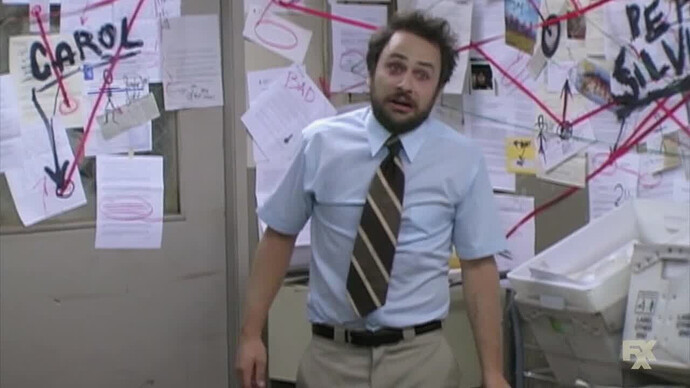First off, I’m taking this course and its really really good, but i think maybe a small thing happened in the progression of GamedevTV that kind of messes up part of this course. its an easy fix with a warning at the beginning…
TLDR: i think you should add a warning to the beginning of this course basically saying “if you have done our beginner+ courses or intermediate courses you may notice a lot of coding issues in the beginning of this course. Don’t Worry! a big part of this course is making you understand WHY these are problems and how to find them and fix them! when we start this course we will be starting with a rough prototype. Throughout the course, we will continuously be refactoring and improving with real examples that you will find in many projects”.
if you made it past the TLDR…sorry but bear with me for a second here.
when this course starts the code is really sloppy. it isn’t something that we start to clean up until over 3/4 the way through it. also, though partially updated, the course was written a long time ago. Sure Unity is a bit different. the real change since then is your catalogue, and courses created by other instruction platforms. I think the expectations for intermediate course code level have changed because of this
stop reading now, it wont offend me, this is way too long and you probably get the point already_
To put it into context i have done all of your beginner, and beginner+ courses, as well as the code architecture course prior to this( i have also done stuff from other people, but i don’t think that effects this much for me at least). I’m also doing the course in 2022LTS.
when i started this course i was a bit taken aback by some of the code level. here were some of the things that drew up as red flags for me…
- using start and awake haphazardly
- lack of use of events or the observer pattern in general
3)limited use of scriptable objects - using quite a few string references what felt avoidable
- using tag == instead of Compare Tag
- using tags where maybe layers would be safer
- the teleport system in general but especially with the fader in place.
many of these things i was already confident with but now i was second guessing myself. i asked @Brian_Trotter about some of these( you know after self gaslighting all my confidence right out the window). After speaking with him i decided to stay the course and keep all my code the same as the instructors for a bit with two exceptions 1)the style guide and 2) the teleport fade which was driving me nuts(half the time when i faded in i would have an error and the fader would be at full alfa in the next scene so that had to go).
While waiting waiting to get to some of the big refactors, I plenty of time to think about if it was an issue or if i was just being an idiot.
I think when this course came out there were so many less resources available that the expectation for intermediate was probably a bit lower. Additionally the course catalogue of GDTV didn’t have those great beginner+ courses by @Stephen_Hubbard . even stuff like the scriptable objects. the big unite speeches had happened, but most of the major content developers derivative videos on it all came out AFTER this course. we go through i think more than 20 hours of this class before we even start to get to the code level up to what is used in the beginner+ classes. to be clear i don’t think those classes should be intermediate instead, when i went from beginner to the code architecture course it was clear to me i was not ready for intermediate. they are a perfect transition.
i think you might want to put a warning like the one in my TLDR just to prevent people from deviating too much or wondering if they should even bother taking the rest of the course. Had i ordered this on udemy and taken some of the non GDTV intermediate courses on there first, i would have likely thought your course was outdated or was just another course teaching bad habits( there are a lot of them) and considered returning it.
P.S. I think i got all of the issues shown in the 3 refactor videos on challenges. You guys must be teaching me a lot, cause i defiantly didn’t know any of that when i started taking GDTV courses.
sorry for the diatribe. i promise im not crazy my mother had me tested.


